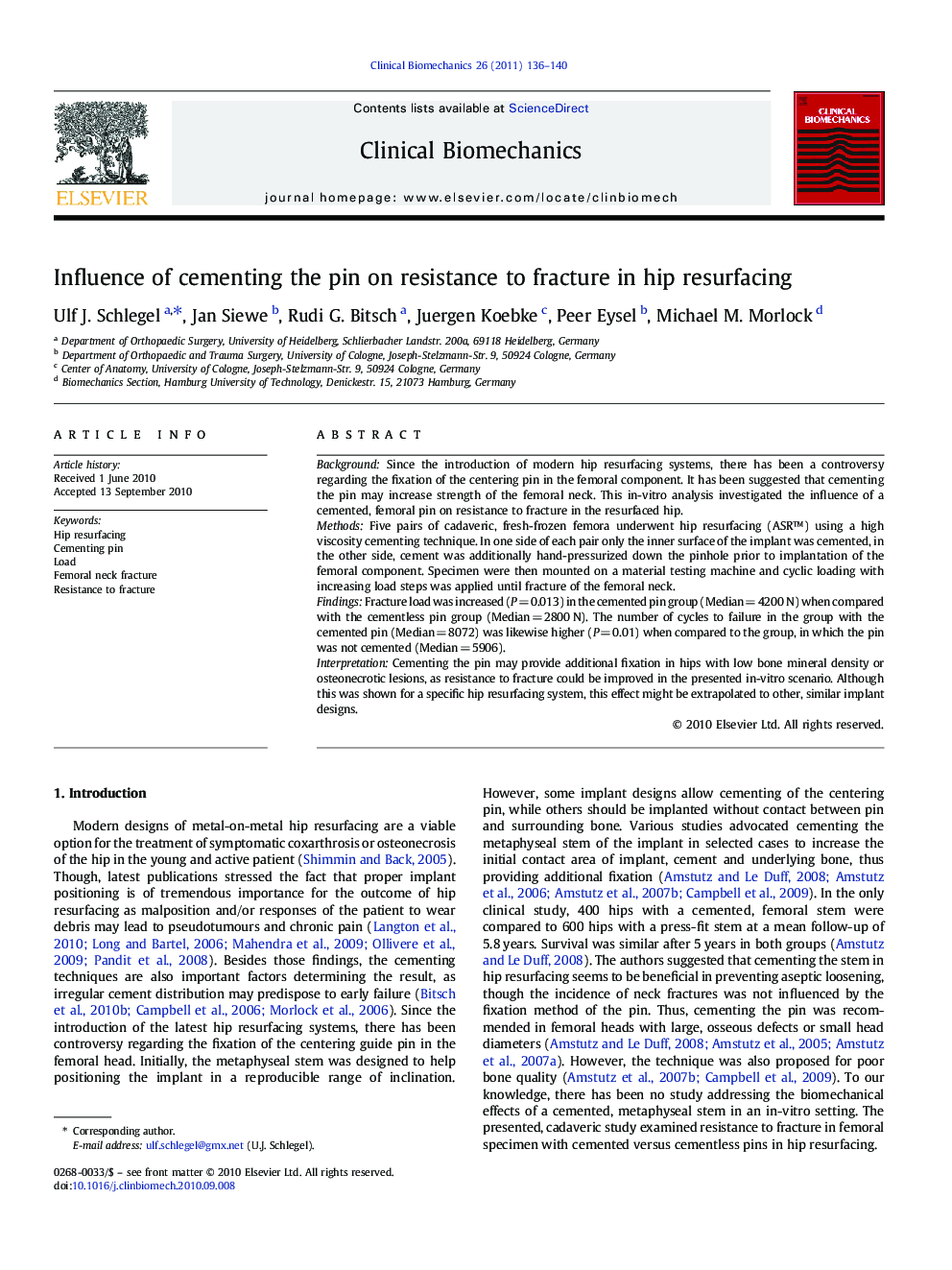| Article ID | Journal | Published Year | Pages | File Type |
|---|---|---|---|---|
| 4050862 | Clinical Biomechanics | 2011 | 5 Pages |
BackgroundSince the introduction of modern hip resurfacing systems, there has been a controversy regarding the fixation of the centering pin in the femoral component. It has been suggested that cementing the pin may increase strength of the femoral neck. This in-vitro analysis investigated the influence of a cemented, femoral pin on resistance to fracture in the resurfaced hip.MethodsFive pairs of cadaveric, fresh-frozen femora underwent hip resurfacing (ASR™) using a high viscosity cementing technique. In one side of each pair only the inner surface of the implant was cemented, in the other side, cement was additionally hand-pressurized down the pinhole prior to implantation of the femoral component. Specimen were then mounted on a material testing machine and cyclic loading with increasing load steps was applied until fracture of the femoral neck.FindingsFracture load was increased (P = 0.013) in the cemented pin group (Median = 4200 N) when compared with the cementless pin group (Median = 2800 N). The number of cycles to failure in the group with the cemented pin (Median = 8072) was likewise higher (P = 0.01) when compared to the group, in which the pin was not cemented (Median = 5906).InterpretationCementing the pin may provide additional fixation in hips with low bone mineral density or osteonecrotic lesions, as resistance to fracture could be improved in the presented in-vitro scenario. Although this was shown for a specific hip resurfacing system, this effect might be extrapolated to other, similar implant designs.
